Dianne Bates's Blog, page 6
December 19, 2015
Writing in 2016
It's far too long since I posted on my blog though who wonders if it's read and by how many. It's like travelling on the wind and feeling nothing but the silence all around one. At this time of year I begin to assess the 12 months gone and the year ahead. Start making plans, especially for my creative year ahead. Lately I've posted some children's poems written years ago on Australian Children's Poetry, the blog I began in March last year (now it's had 140,000+ hits). Heartened by enthusiastic comments, I have resolved to write more poems in 2016. I'll also finish my humorous children's novel with draft title School's Crool. I've written so little in 2015, but have had five books published and at least another three in the months to come.
Meanwhile, I will be judging the 830 entries in the Red Gum Book Club's national youth writing competition. Really looking forward to that as it's not often I hear the creative voice of children.
If you're reading this, I wish you a Merry Christmas with your loved ones, and a creative and successful year ahead!
Di
Meanwhile, I will be judging the 830 entries in the Red Gum Book Club's national youth writing competition. Really looking forward to that as it's not often I hear the creative voice of children.
If you're reading this, I wish you a Merry Christmas with your loved ones, and a creative and successful year ahead!
Di
Published on December 19, 2015 12:32
October 19, 2015
Jo-Kin Battles the It
 This recent children’s book was reviewed by Ashling Kwok in the Australian children’s book review blog Buzz Words http://www.buzzwordsmagazine.com )
This recent children’s book was reviewed by Ashling Kwok in the Australian children’s book review blog Buzz Words http://www.buzzwordsmagazine.com )
Jo-Kin Battles the It by Karen Tyrrell, illustrated by Trevor SalterPB RRP $14.95ISBN 9780994302106
Blast off on an exciting adventure with Josh Atkins (aka Jo-Kin) and his trusty sidekick, nerdy Sam Jones (Sam-Wich). The adventure begins when the fearless duo win the Super Space Kid contest and set off on a mission to save the galaxy from a deadly alien called the IT.
The battle is on when the IT kidnaps Captain Astra and Jo and Sam must find a way to save the galaxy before it’s too late. Along the way, they must survive entry challenges, successfully master high tech gadgets and battle creatures trying to destroy them.
This excellent book is perfect for middle grade readers aged 7 to 10 years. The storyline is creative and will hold the read’s attention from the moment they pick up the book. The characters are well-developed and likeable. Readers will relate to them and enjoy going on this journey with them.
Jo-Kin Battles the It is the latest release from award-winning resilience author-teacher Karen Tyrrell. Over the years Karen has released a number of empowering books dealing with issues that affect us all.
This book embodies many of the elements required to produce a great story but it also deals with important topics such as resilience, team building, bullying, self-esteem and friendship.
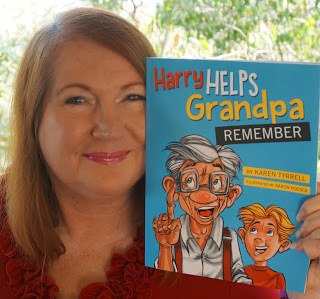
The cover of the book is graphically enticing as it is brightly coloured and features interesting images that will appeal to young readers. The illustrations inside the book add a nice touch and break up the text.
This is a brilliant book and is definitely worth a read. It is action-packed and humorous, and will leave the reader wanting more.
To purchase a copy, see Amazon http://www.amazon.com/Jo-Kin-Battles-Super-Space-Kids/dp/099430210X/Jo-Kin Battles the Itis also available on LSI, library services and selected stores including some Dymocks and Angus & Robertson.
Published on October 19, 2015 00:00
October 3, 2015
Sad, the Dog by Sandy Fussell
 Sad, the Dog by Sandy Fussell, illustrations by Tull Suwannakit (Walker Books Australia) HB RRP $31.99
Sad, the Dog by Sandy Fussell, illustrations by Tull Suwannakit (Walker Books Australia) HB RRP $31.99Reviewed by Dianne Bates
The cover of this picture book for readers aged 6+ years is gloomy, and like the dog depicted, it looks sad. An unwanted Christmas present, the nameless dog is looked after competently by an elderly couple, but they don’t really care about it. They are so disinterested in the dog that when they move house, they dump poor Sad.
 Author of Sad, The Dog, Sandy FussellHappily, life is not always gloom and sadness; there is always hope. And, into the neglected dog’s life comes a new chance at happiness in the shape of a small boy. Jack cares for his new, adopted pet in the way any pet ought to be cared for and by the end of this story this now lucky dog Sad has a new name.
Author of Sad, The Dog, Sandy FussellHappily, life is not always gloom and sadness; there is always hope. And, into the neglected dog’s life comes a new chance at happiness in the shape of a small boy. Jack cares for his new, adopted pet in the way any pet ought to be cared for and by the end of this story this now lucky dog Sad has a new name.The author, Sandy Fussell, is well-known for her immensely popular Samurai Kids junior novel series, and other prize-winning novels; this is her first picture book. It’s sure to be a winner. The story is told in clear, simple words that are wonderful for reading aloud, especially by a parent to a child; the watercolour illustrations perfectly match the tone of the story.
 Sad, the Dog's illustrator, Tull Suwannakit
Sad, the Dog's illustrator, Tull Suwannakit
Offering hope to anyone is probably the best gift anyone can give another, and this book certainly offers a loveless dog much hope by story’s end.
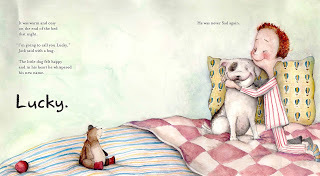 A page from Sandy and Tull's new book
A page from Sandy and Tull's new book
Published on October 03, 2015 23:08
September 15, 2015
Working With a Great Publisher
For about 35 years I’ve been writing books for children and have now published well over 120 titles with a range of big publishers like Penguin Books and HarperCollins to smaller publishers such as Morris Publishing Australia and Dragon Tales Publishing. Although the bigger companies have more clout nationally and internationally and the royalties from them are generally more than that received from smaller publishers, I have a preference for publishing with the smaller. Personal attention, better lines of communication and pro-activity are hallmarks of staff working on small imprints. This is the story of the latest publisher I worked with which has been one of the best I’ve ever published with.
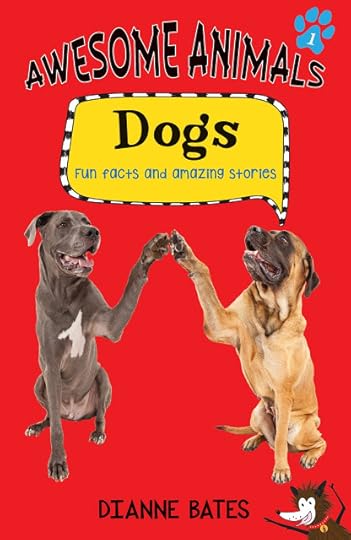
Some years ago I wrote three children’s non-fiction books about cats, dogs and horses which, being all alike in presentation, I saw as a book series. Each contained fun facts and amazing stories about animals - a Guinness Book of Records meets Ripley’s Believe It or Not! Each book -- for example cats -- had the same format as the other two. Awesome Catslooked at cats in history, cat adventures, famous cats and famous people’s cats, TV, stage and movie cats; and working, lucky, spoiled and clever cats. There were many jaw-dropping facts about cats, stories that were amazing but true, jokes and verse featuring cats, and for the true catophiles, there was a list of children’s novels featuring cats.
As well as completing every manuscript, I also created a marketing proposal to help any publisher make a decision to publish. The proposal included the demographics of the intended audience (children aged 8 to 12 years with a reading age of nine), a description of the series’ contents and approach, the main strengths of the series, any major competition (I couldn’t find any), markets to which the series would appeal and an author bio. I then found as many possible publishers for the series and began my submissions.
Looking at statistics in my dispatches’ file over a few twelve month periods, I have found that on average one third of publishers to whom I submit manuscripts never respond. Of those that do, most of them take from three to nine months to reply. None ever give reasons for rejecting manuscripts (which is fair enough as they are not assessors, just industry people accepting or rejecting a product).
Eventually I had submitted to 30 publishers in Australia and overseas but without any luck. Then a small Australian publisher based in Sydney expressed interest. I was invited to the publisher’s office where she showed me books she had published. They looked exactly what I had envisaged for my books – attractively designed with photographic content. All of the books she had published were about animals. That very happy day the publisher said she would send me a contract.
I waited. For months. When I wrote asking when I might expect the contract, the publisher replied (after some weeks) apologising that she was now unable to publish my books; that since our meeting she had closed her doors.
I then submitted my book series to all other publishers I thought might be interested and when I had exhausted all possibilities, I put my manuscripts in the proverbial ‘bottom drawer’. Years followed and I had more or less forgotten about my animal series. Then one day I was reviewing a beautifully designed, attractive and well-written children's non-fiction book by an Australian publisher I’d not heard of before – Big Sky Publishing, based in Sydney. When I saw on their website that Big Sky specialised in non-fiction books, I remembered my manuscripts and made a submission.
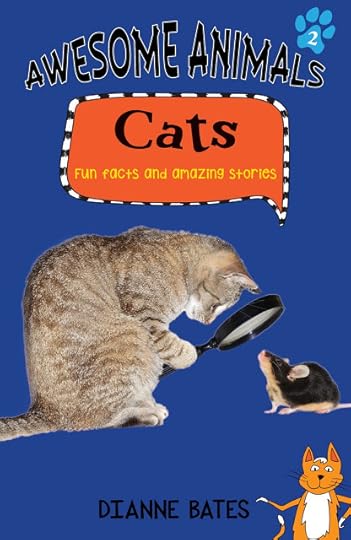 I sent my manuscript via Word document attachment by email on 13 January, 2015; receipt was acknowledged the next day, and then on 12 February I received an email from the publisher Diane Evans saying Big Sky was interested. Diane phoned me three days later and all three books were contracted the following month.
I sent my manuscript via Word document attachment by email on 13 January, 2015; receipt was acknowledged the next day, and then on 12 February I received an email from the publisher Diane Evans saying Big Sky was interested. Diane phoned me three days later and all three books were contracted the following month.
Submitting a manuscript and having it contracted in less than two months is something I hadn’t experienced in many years.
This was the beginning of what has turned out to be a very happy journey for me. The publisher was a total delight to work with, and when I was sent samples of the glorious artwork and page designs to approve, I was even happier.
Diane’s sister Sharon who is responsible for book promotion has also been a blessing in the publishing process. Big Sky Publishing also promotes their titles via schools through Redgum Book Club focusing on quality children’s books for children aged 4 to 13 years of age. Distributed nationally my book will reach so many more children than would be possible with most other publishers. On top of that, Jodie Bennett who also works with the Evans’ sisters, has been responsible for the production and delivery of bookmarks and posters – all in full, bright colour, and like the illustrations in each of the books, beautifully designed and presented. Each of the books feature lots of gorgeous illustrations combined with coloured photographic images of adorable dogs and cats from Best Friends Rescue and Little Legs Cat Rescue. The inclusion of real-life images and stories of the charismatic animals from these pet rescue organisations adds another level of education and inspiration.
I could not really have imagined that that the Awesome Cats, Dogs and Horses’ books would turn out as brilliantly as they have. My whole experience with Big Sky Publishing from start to finish has been an author’s dream... in fact I really couldn’t have dreamed it, only hoped for it.
So here’s an enormous thank you for all of those at Big Sky Publishing for their vision, their courtesy and great communication, and for their hard work turning once rejected manuscripts into books that I feel immensely proud of.
The books retail for $14.99 each. Here’s where you can get Awesome Cats:http://www.bigskypublishing.com.au/Books/Children/Awesome-Animals-Cats/1123/productview.aspxand Awesome Dogs: http://www.bigskypublishing.com.au/Books/Children/Awesome-Animals-Dogs/1124/productview.aspx The distributor is Woodslane, phone: (02) 8445 2300 F: (02) 9970 5002 info@woodslane.com.au www.woodslane.com.au

Some years ago I wrote three children’s non-fiction books about cats, dogs and horses which, being all alike in presentation, I saw as a book series. Each contained fun facts and amazing stories about animals - a Guinness Book of Records meets Ripley’s Believe It or Not! Each book -- for example cats -- had the same format as the other two. Awesome Catslooked at cats in history, cat adventures, famous cats and famous people’s cats, TV, stage and movie cats; and working, lucky, spoiled and clever cats. There were many jaw-dropping facts about cats, stories that were amazing but true, jokes and verse featuring cats, and for the true catophiles, there was a list of children’s novels featuring cats.
As well as completing every manuscript, I also created a marketing proposal to help any publisher make a decision to publish. The proposal included the demographics of the intended audience (children aged 8 to 12 years with a reading age of nine), a description of the series’ contents and approach, the main strengths of the series, any major competition (I couldn’t find any), markets to which the series would appeal and an author bio. I then found as many possible publishers for the series and began my submissions.
Looking at statistics in my dispatches’ file over a few twelve month periods, I have found that on average one third of publishers to whom I submit manuscripts never respond. Of those that do, most of them take from three to nine months to reply. None ever give reasons for rejecting manuscripts (which is fair enough as they are not assessors, just industry people accepting or rejecting a product).
Eventually I had submitted to 30 publishers in Australia and overseas but without any luck. Then a small Australian publisher based in Sydney expressed interest. I was invited to the publisher’s office where she showed me books she had published. They looked exactly what I had envisaged for my books – attractively designed with photographic content. All of the books she had published were about animals. That very happy day the publisher said she would send me a contract.
I waited. For months. When I wrote asking when I might expect the contract, the publisher replied (after some weeks) apologising that she was now unable to publish my books; that since our meeting she had closed her doors.
I then submitted my book series to all other publishers I thought might be interested and when I had exhausted all possibilities, I put my manuscripts in the proverbial ‘bottom drawer’. Years followed and I had more or less forgotten about my animal series. Then one day I was reviewing a beautifully designed, attractive and well-written children's non-fiction book by an Australian publisher I’d not heard of before – Big Sky Publishing, based in Sydney. When I saw on their website that Big Sky specialised in non-fiction books, I remembered my manuscripts and made a submission.
 I sent my manuscript via Word document attachment by email on 13 January, 2015; receipt was acknowledged the next day, and then on 12 February I received an email from the publisher Diane Evans saying Big Sky was interested. Diane phoned me three days later and all three books were contracted the following month.
I sent my manuscript via Word document attachment by email on 13 January, 2015; receipt was acknowledged the next day, and then on 12 February I received an email from the publisher Diane Evans saying Big Sky was interested. Diane phoned me three days later and all three books were contracted the following month. Submitting a manuscript and having it contracted in less than two months is something I hadn’t experienced in many years.
This was the beginning of what has turned out to be a very happy journey for me. The publisher was a total delight to work with, and when I was sent samples of the glorious artwork and page designs to approve, I was even happier.
Diane’s sister Sharon who is responsible for book promotion has also been a blessing in the publishing process. Big Sky Publishing also promotes their titles via schools through Redgum Book Club focusing on quality children’s books for children aged 4 to 13 years of age. Distributed nationally my book will reach so many more children than would be possible with most other publishers. On top of that, Jodie Bennett who also works with the Evans’ sisters, has been responsible for the production and delivery of bookmarks and posters – all in full, bright colour, and like the illustrations in each of the books, beautifully designed and presented. Each of the books feature lots of gorgeous illustrations combined with coloured photographic images of adorable dogs and cats from Best Friends Rescue and Little Legs Cat Rescue. The inclusion of real-life images and stories of the charismatic animals from these pet rescue organisations adds another level of education and inspiration.
I could not really have imagined that that the Awesome Cats, Dogs and Horses’ books would turn out as brilliantly as they have. My whole experience with Big Sky Publishing from start to finish has been an author’s dream... in fact I really couldn’t have dreamed it, only hoped for it.
So here’s an enormous thank you for all of those at Big Sky Publishing for their vision, their courtesy and great communication, and for their hard work turning once rejected manuscripts into books that I feel immensely proud of.
The books retail for $14.99 each. Here’s where you can get Awesome Cats:http://www.bigskypublishing.com.au/Books/Children/Awesome-Animals-Cats/1123/productview.aspxand Awesome Dogs: http://www.bigskypublishing.com.au/Books/Children/Awesome-Animals-Dogs/1124/productview.aspx The distributor is Woodslane, phone: (02) 8445 2300 F: (02) 9970 5002 info@woodslane.com.au www.woodslane.com.au
Published on September 15, 2015 18:43
August 17, 2015
New Play Collection
 Out this month is A Gaggle of Giggles (Phoenix Education), a collection of LOL plays for junior secondary students co-written by husband and wife team, Bill Condon and Dianne Bates. All the plays feature large casts.
Out this month is A Gaggle of Giggles (Phoenix Education), a collection of LOL plays for junior secondary students co-written by husband and wife team, Bill Condon and Dianne Bates. All the plays feature large casts. Students will soon leave the classroom far behind when they dive into this funny assortment. They will set sail for adventure with such characters as Dotty Potty, Odious Underarmus, Freddie O’Feral, Louis Q Weasel (Q for Cute), Oscar Swindlepuss, and Tazzie Wallaroo and his faithful team of Cha-Wow-Wows.
The collection retails for $19.95. For more information, go to http://www.phoenixeduc.com/shop/item/a-gaggle-of-giggles
Published on August 17, 2015 21:20
August 9, 2015
Word Farm
Word Farm is an interesting Facebook page which offers a sneak peek into the writing spaces of Australian authors. Some are humble and business like, while others have inspiring views or are adorned with artworks, personal treasures and even toys. It’s a fascinating insight into the world of other writers. Each guest offers a trinket of writing wisdom, but ultimately as writers we have to find our own path and what works best for ourselves,.
Word Farm is always willing to hear from published Australian authors who would like to be featured. Please email wordfarm@dodo.com.au and check out the page at www.facebook.com/wordfarmaustralia
Word Farm is always willing to hear from published Australian authors who would like to be featured. Please email wordfarm@dodo.com.au and check out the page at www.facebook.com/wordfarmaustralia
Published on August 09, 2015 21:21
July 31, 2015
LIVING WITH MENTAL ILLNESS
Nearly two decades ago, after a particular long stint of black depression, I was relieved to discover that I suffer from bipolar disorder. It was only then that I realised why I could be so up one week and so down another. It took a while but eventually I was medicated so that I can now function without any mood swings.
Nowadays, if my husband Bill thinks I might be a bit over the top (symptoms are heightened creativity, speaking too loudly or too often, inability to focus and to sleep), he reminds me to take increased meds. Alternatively, if he suspects I’m slipping into a dark place, again he reminds me to increase my meds. Any time he’s particularly worried about me, we both visit my GP. I always obey Bill and my GP when it comes to my illness.
It’s rare, though, that the usual dose of meds needs to be increased. I am a high functioning, creative and productive person.
So what’s this article go to do with writing for children?
Last week I had an ‘ah!’ moment. A fellow children’s writer told me that the convener of a national conference had ‘whispered’ to her that I have bipolar. For ten years this conference has been running and despite the fact I was one of its co-founders, and that I have over 30 years’ experience as an author, bookseller, national online magazine compiler (Buzz Words), bookseller, schools’ performer, manuscript assessor, editor and teacher, not once have I received an invitation to present at the conference. Now, it seems this reluctance to have me involved is because of my (very much in control) mental illness.
It could be that I’m being paranoid or perhaps the convener has simply overlooked me. But with the word ‘whispered’, I suspect the poor woman is afraid that asking me might create a scandal of some sort. The mentally 'ill' woman running amok! Imagine it!
The fact is that I let anyone know of my illness because I am not ashamed of it. It’s part of who I am. I have chronic physical illness conditions and a chronic mental illness condition. So what?
I really feel sorry that anyone, including this convener, is so misinformed that they miss out on the opportunity of really getting to know me and to make use of my considerable expertise and my talents.
Nowadays, if my husband Bill thinks I might be a bit over the top (symptoms are heightened creativity, speaking too loudly or too often, inability to focus and to sleep), he reminds me to take increased meds. Alternatively, if he suspects I’m slipping into a dark place, again he reminds me to increase my meds. Any time he’s particularly worried about me, we both visit my GP. I always obey Bill and my GP when it comes to my illness.
It’s rare, though, that the usual dose of meds needs to be increased. I am a high functioning, creative and productive person.
So what’s this article go to do with writing for children?
Last week I had an ‘ah!’ moment. A fellow children’s writer told me that the convener of a national conference had ‘whispered’ to her that I have bipolar. For ten years this conference has been running and despite the fact I was one of its co-founders, and that I have over 30 years’ experience as an author, bookseller, national online magazine compiler (Buzz Words), bookseller, schools’ performer, manuscript assessor, editor and teacher, not once have I received an invitation to present at the conference. Now, it seems this reluctance to have me involved is because of my (very much in control) mental illness.
It could be that I’m being paranoid or perhaps the convener has simply overlooked me. But with the word ‘whispered’, I suspect the poor woman is afraid that asking me might create a scandal of some sort. The mentally 'ill' woman running amok! Imagine it!
The fact is that I let anyone know of my illness because I am not ashamed of it. It’s part of who I am. I have chronic physical illness conditions and a chronic mental illness condition. So what?
I really feel sorry that anyone, including this convener, is so misinformed that they miss out on the opportunity of really getting to know me and to make use of my considerable expertise and my talents.
Published on July 31, 2015 23:50
July 24, 2015
HELP THROUGH THE ROUGH PATCHES
© Dianne (Di) Bates
Not so long ago, my award-winning children’s author husband Bill Condon and I began to meet fortnightly with three other local children’s writers, one being Ann Whitehead (Dangerous Places, Hachette Livre Australia) and the other two who are unpublished, to workshop our writing. Each brings a major current project to the table, talk of the problems we are experiencing, read sections of our work-in-progress, and open the floor to comments, criticisms and suggestions from the others.
It is over a year now since I left a well-established workshop group*; I had forgotten how helpful and inspiring it is to have the support and insight of others, and how inspiring a workshop session can be. Between now and our next workshop meeting in a fortnight’s time, I will be re-working my blighted YA novel, preparing it for re-presentation to the group. Even if you are an unpublished writer, can I suggest that you find – even advertise – for some writing buddies? It can be extremely motivating, to say the least, to have even one supporter, someone you can bounce ideas and writing drafts off of.
Reading what other published authors have to say about their methods also inspires me with my own work. One of my favourite American writers is Lois Lowry, twice winner of the prestigious Newbury Medal (I especially love her book, The Woods at the End of Autumn Street.) Below are some answers I found this week that she gave to common writing problems: her answers helped me with some questions I am grappling with at the moment. I hope you find it helpful, as well.
What advice do you give to authors who would like to develop their writing voice? What suggestions do you have for creating self-discipline at writing? As for "voice": I feel that you should write a book as if you are writing a letter to a friend: telling about something interesting, something meaningful, that has happened. It should be an intimate and private telling, friend to friend. It should be YOU, laughing, crying, teasing, angry, relating events, inviting your close friend to pay attention, to empathize. That will be your voice, a recognizable one.The question about self-discipline is a tough one for me. I don’t think self-discipline is a problem if you are doing work that you love and that you feel is important. I can’t imagine anyplace that I’d rather be than right here, at my desk. I need self-discipline to make me get up and take the dog for a walk, or to cook dinner!
How do you get beyond just an idea? How does an idea become a story? Some ideas don’t. Sometimes what seems like a wonderful starting point - a wonderful idea - turns out to be no more than an anecdote. You have to look beyond a "beginning" to see if there is any depth to it, any reason for sitting at a desk for month after month laboring over it, any reason for a publisher investing thousands of dollars into it, any reason for kids to pick it up and care about it. Does it have anything to say beyond the superficial? I think that’s the key, for me.
What do you think are the key elements when writing a book? When you have your ideas do you write a set plan of what will happen in the plot of the story? I have occasionally listed the elements - each of them leading to the next - of a successful book as 1. character; 2. quest; 3. complications and choices; 4. catastrophe; 5. conclusion, and 6. change.I think most writers and teachers of writing would probably agree that some similar list applies.But - in my opinion - it doesn’t work to make the list and then try to create the story to fit it. You create the story first; later, you see how and where it fits the pattern; finally, you make the necessary revisions which will become apparent at that point. You may find, for example, that the catastrophic event (#4) - upon which the concluding events (#5) should be predicated - occurs too early. Or (and this is quite common a flaw) that the character, who should have experienced growth as a result of the events throughout the narrative, has not really undergone a change (#6).
* This workshop, which met fortnightly for five years, and was originally composed of six children’s authors, folded when some of the members moved to mostly writing adult science fiction and fantasy. There are now two groups – one writing for adults, and the other, to which I belong, are writing for children.
Dianne (Di) Bates has published 130+ books for children. Her most recently published titles are Nobody’s Boy (Celapene Press, 2013 CBCA Notable) and A Game of Keeps (Celapene Press, 2014), Here Comes Trouble! (Dragon Tales Publishing) Her website is http://www.enterprisingwords.com.au
Not so long ago, my award-winning children’s author husband Bill Condon and I began to meet fortnightly with three other local children’s writers, one being Ann Whitehead (Dangerous Places, Hachette Livre Australia) and the other two who are unpublished, to workshop our writing. Each brings a major current project to the table, talk of the problems we are experiencing, read sections of our work-in-progress, and open the floor to comments, criticisms and suggestions from the others.
It is over a year now since I left a well-established workshop group*; I had forgotten how helpful and inspiring it is to have the support and insight of others, and how inspiring a workshop session can be. Between now and our next workshop meeting in a fortnight’s time, I will be re-working my blighted YA novel, preparing it for re-presentation to the group. Even if you are an unpublished writer, can I suggest that you find – even advertise – for some writing buddies? It can be extremely motivating, to say the least, to have even one supporter, someone you can bounce ideas and writing drafts off of.
Reading what other published authors have to say about their methods also inspires me with my own work. One of my favourite American writers is Lois Lowry, twice winner of the prestigious Newbury Medal (I especially love her book, The Woods at the End of Autumn Street.) Below are some answers I found this week that she gave to common writing problems: her answers helped me with some questions I am grappling with at the moment. I hope you find it helpful, as well.
What advice do you give to authors who would like to develop their writing voice? What suggestions do you have for creating self-discipline at writing? As for "voice": I feel that you should write a book as if you are writing a letter to a friend: telling about something interesting, something meaningful, that has happened. It should be an intimate and private telling, friend to friend. It should be YOU, laughing, crying, teasing, angry, relating events, inviting your close friend to pay attention, to empathize. That will be your voice, a recognizable one.The question about self-discipline is a tough one for me. I don’t think self-discipline is a problem if you are doing work that you love and that you feel is important. I can’t imagine anyplace that I’d rather be than right here, at my desk. I need self-discipline to make me get up and take the dog for a walk, or to cook dinner!
How do you get beyond just an idea? How does an idea become a story? Some ideas don’t. Sometimes what seems like a wonderful starting point - a wonderful idea - turns out to be no more than an anecdote. You have to look beyond a "beginning" to see if there is any depth to it, any reason for sitting at a desk for month after month laboring over it, any reason for a publisher investing thousands of dollars into it, any reason for kids to pick it up and care about it. Does it have anything to say beyond the superficial? I think that’s the key, for me.
What do you think are the key elements when writing a book? When you have your ideas do you write a set plan of what will happen in the plot of the story? I have occasionally listed the elements - each of them leading to the next - of a successful book as 1. character; 2. quest; 3. complications and choices; 4. catastrophe; 5. conclusion, and 6. change.I think most writers and teachers of writing would probably agree that some similar list applies.But - in my opinion - it doesn’t work to make the list and then try to create the story to fit it. You create the story first; later, you see how and where it fits the pattern; finally, you make the necessary revisions which will become apparent at that point. You may find, for example, that the catastrophic event (#4) - upon which the concluding events (#5) should be predicated - occurs too early. Or (and this is quite common a flaw) that the character, who should have experienced growth as a result of the events throughout the narrative, has not really undergone a change (#6).
* This workshop, which met fortnightly for five years, and was originally composed of six children’s authors, folded when some of the members moved to mostly writing adult science fiction and fantasy. There are now two groups – one writing for adults, and the other, to which I belong, are writing for children.
Dianne (Di) Bates has published 130+ books for children. Her most recently published titles are Nobody’s Boy (Celapene Press, 2013 CBCA Notable) and A Game of Keeps (Celapene Press, 2014), Here Comes Trouble! (Dragon Tales Publishing) Her website is http://www.enterprisingwords.com.au
Published on July 24, 2015 17:55
June 27, 2015
Children in Care
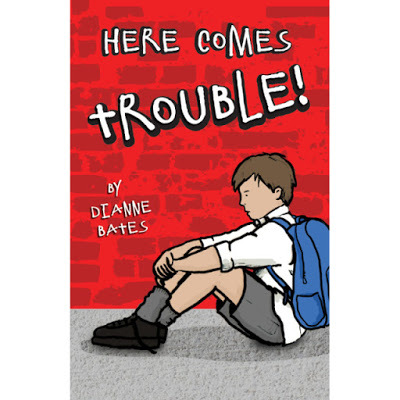 Even though I’ve written dozens of books (more than 120 and counting), it’s always an exciting time when a new book hits the shelves. My latest, due out in July, is a novel for young readers aged 8 to 11 years. Here Comes Trouble! is based on a boy I knew, one of five siblings, whose parents were addicts. The boy's family lived close to where my husband and I lived. He and his brothers and sisters ‘adopted’ us as ‘Nanny’ and ‘Poppy Bill.’ Sometimes the children came to us for food, other times we took them out, gave them gifts for Christmas and birthdays, or we shopped for groceries for the family. Sometimes we lent money to their parents.
Even though I’ve written dozens of books (more than 120 and counting), it’s always an exciting time when a new book hits the shelves. My latest, due out in July, is a novel for young readers aged 8 to 11 years. Here Comes Trouble! is based on a boy I knew, one of five siblings, whose parents were addicts. The boy's family lived close to where my husband and I lived. He and his brothers and sisters ‘adopted’ us as ‘Nanny’ and ‘Poppy Bill.’ Sometimes the children came to us for food, other times we took them out, gave them gifts for Christmas and birthdays, or we shopped for groceries for the family. Sometimes we lent money to their parents.It always upset me that their mother frequently kept them home from school. I talked to their school and became aware that the family had a caseworker, that the authorities were aware of their situation. I worried a lot about the domestic violence in the home and other adult abuses the children suffered, so it came as a relief to me when I discovered that all five had been taken from their parents and put into care. Months later I ran into them and was amazed by the differences in them – happy, smiling and clean children who seemed much calmer. Yes, their carer told me, they were attending school every day and coming on in leaps and bounds in their learning and socialising.
Here Comes Trouble! is a fictional story but with a background of five siblings taken into care. The oldest boy struggles to fit into his home and his school life. Friendless, he accepts the company of an older boy who leads him into trouble with the police. Happily, there is an older couple which helps him and his siblings when their parents fail them. As with the children I was ‘Nanny’ to, they are taken into care where they live happily, all the while wanting the return of their parents.
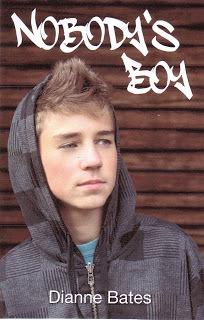
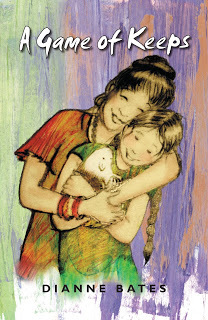 Recently, I’ve heard of several academics who are researching Australian written books for young readers that feature foster children. Both academics have been surprised to see how few there are -- even though thousands of children in our country are taken into care every year.
Recently, I’ve heard of several academics who are researching Australian written books for young readers that feature foster children. Both academics have been surprised to see how few there are -- even though thousands of children in our country are taken into care every year. As a foster mother, I too looked for books to read to children we cared for: at the time all I could find that fitted the bill were books by American authors -- The Pinballs by Betsy Byars and Ruby Holler, Sharon Creech. Here Comes Trouble! is my third book about foster children: the others are Nobody’s Boy and A Game of Keeps (both Celapene Press books).
Here Comes Trouble! is published by Dragon Tales Publishing RRP $14.95. http://www.dragontalespublishing.com.au/here-comes-trouble.html
Published on June 27, 2015 03:16
June 24, 2015
Harry Helps Grandpa Remember
 In her most recent book Australian author Karen Tyrell tells about the special love between a little boy and his grandpa who was Alzheimer’s. Harry will do anything to help his grandpa remember. Karen says, ‘this is a heart-warming story, full of humour and hope.’
In her most recent book Australian author Karen Tyrell tells about the special love between a little boy and his grandpa who was Alzheimer’s. Harry will do anything to help his grandpa remember. Karen says, ‘this is a heart-warming story, full of humour and hope.’ Harry Helps Grandpa Remember is now on Amazon world-wide as a print Book and as an eBook. ISBN: 9780987274083
Here is a review that appeared recently in the Buzz Words blog http://www.buzzwordsmagazine.com/:
Harry Helps Grandpa Remember written by Karen Tyrrell, illustrated by Aaron Pocock (Digital Future Press)PB RRP $15.95ISBN 978-0-98727-408-3 Reviewed by Peta Biggin
Harry and Grandpa love to play hide-and-seek together. However, Harry starts to notice changes in Grandpa. He’s become grumpy, confused and forgetful – even forgetting Harry’s name. Harry is hurt and sad but decides that he will do whatever he can to help Grandpa remember the things he’s forgotten.
Harry Helps Grandpa Remember is an uplifting story about the important, supportive role family can play in the lives of those suffering from Dementia. Harry is hurt and distressed at the decline of his grandpa, feeling the loss of a friend and playmate. However, rather than withdraw from the relationship, Harry comes up with lots of wonderful ways he can both reconnect with his grandpa and help him to reclaim his lost memories.
Harry Helps Grandpa Remember tackles a confronting topic in a positive and encouraging way. The focus is always on what can be gained and enjoyed from such a difficult situation; activities that can easily be undertaken by most children to ensure a continued participation in their relative’s life.
It is the little things that we sometimes take for granted – a walk through familiar surroundings, a song – that are presented here as the important tasks anyone can enjoy with a relative suffering from Dementia. In doing these, we see Harry not only bring something back to his grandpa but also take the first steps in adjusting to what will be a constantly changing relationship. This is a very hopeful book, however there is no unrealistic happily-ever-after on offer. Grandpa does not recover; however, his recollection of Harry’s name is celebrated as the blessing it is.
Aaron Pocock’s illustrations are fun and energetic. With lots of colour and detail, they are a beautiful accompaniment – reflecting the optimism and positivism of the story. Karen Tyrrell is an Australian author of both adult and children’s books. Her books for adults include Me and Her: A Memoir of Madness and Me and Him: A Guide to Recovery about her own Aaron Pocock is an English artist/illustrator who is based in Brisbane. He illustrates children’s books, book cover, CD sleeves and almost anything else. He also works in a find art capacity producing watercolour, acrylic and oil paintings. In 2011 he was chosen to illustrate the Australia Post stamp set ‘Mythical Creatures’ (for Children’s Book Week). He can be found online athttp://aaronpocock.weebly.com/
 To celebrate, Harry will be visiting these author sites:22 June: Harry Helps Grandpa Remember Now on AMAZON www.karentyrrell.com
To celebrate, Harry will be visiting these author sites:22 June: Harry Helps Grandpa Remember Now on AMAZON www.karentyrrell.com 23 June: Ali Stegert Interview http://ali-stegert.com/24 June: Di Bates http://diannedibates.blogspot.com.au/25 June: Robyn Opie Interview www.robynopie.blogspot.com25 June: Jackie Hosking Review www.jackiehoskingpio.wordpress.com26 June: Charmaine Clancy Author Platform http://charmaineclancy.com/29 June: Sally Odgers interview http://promotemeplease.blogspot.com.au30 June: Jill Smith Review https://authorjillsmith.wordpress.com30 June: June Perkins Interview http://gumbootspearlz.org/1 July Dimity Powell Review http://dimswritestuff.blogspot.com.au/Please leave a comment on any of the sites above for a chance to win an eCopy of Harry Helps Grandpa Remember . There are five copies to be won with the winner announced 3 July. Good luck
http://www.amazon.com/Harry-Helps-Gra...
Published on June 24, 2015 00:30



